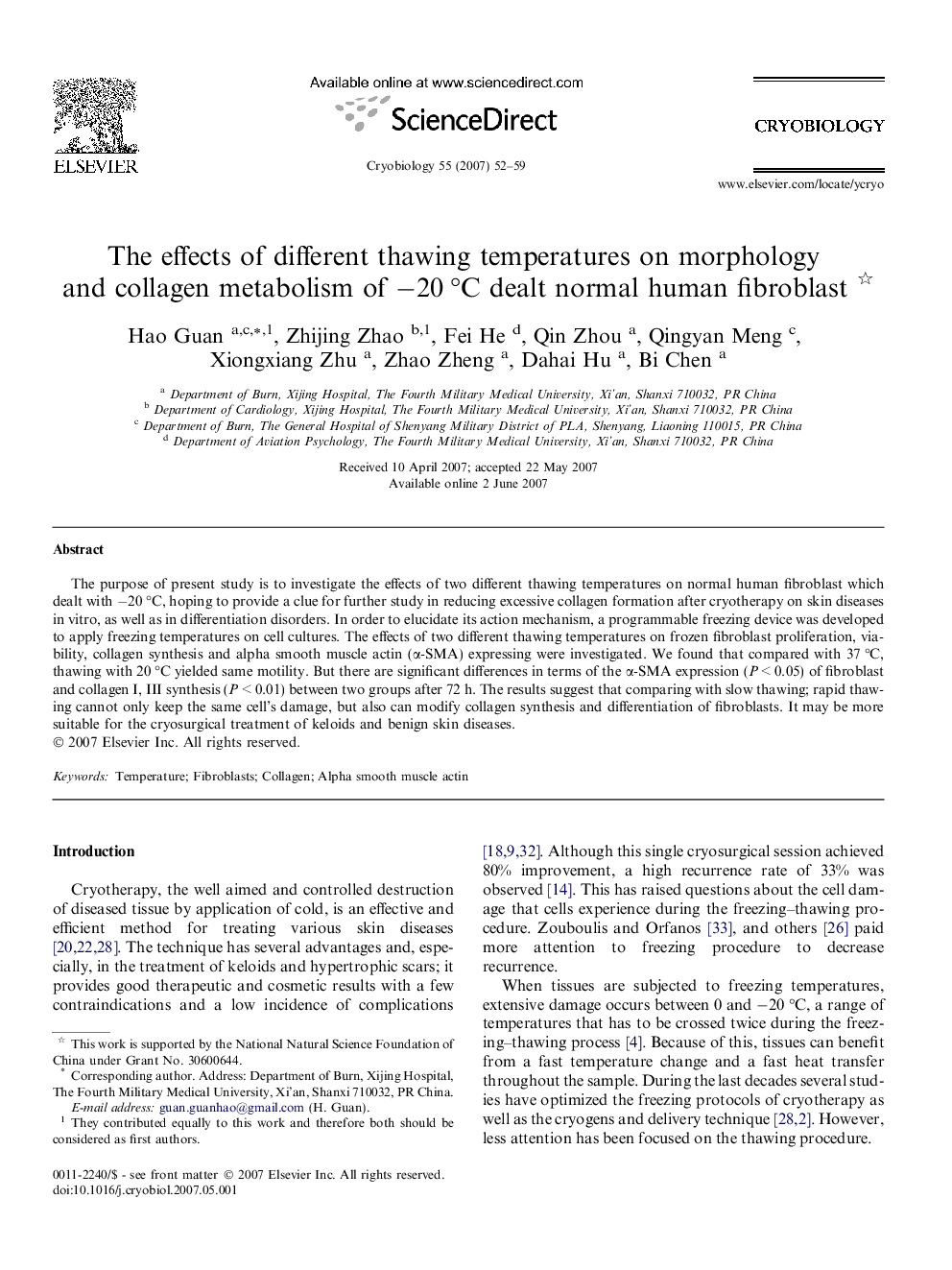| Article ID | Journal | Published Year | Pages | File Type |
|---|---|---|---|---|
| 2169278 | Cryobiology | 2007 | 8 Pages |
Abstract
The purpose of present study is to investigate the effects of two different thawing temperatures on normal human fibroblast which dealt with â20 °C, hoping to provide a clue for further study in reducing excessive collagen formation after cryotherapy on skin diseases in vitro, as well as in differentiation disorders. In order to elucidate its action mechanism, a programmable freezing device was developed to apply freezing temperatures on cell cultures. The effects of two different thawing temperatures on frozen fibroblast proliferation, viability, collagen synthesis and alpha smooth muscle actin (α-SMA) expressing were investigated. We found that compared with 37 °C, thawing with 20 °C yielded same motility. But there are significant differences in terms of the α-SMA expression (P < 0.05) of fibroblast and collagen I, III synthesis (P < 0.01) between two groups after 72 h. The results suggest that comparing with slow thawing; rapid thawing cannot only keep the same cell's damage, but also can modify collagen synthesis and differentiation of fibroblasts. It may be more suitable for the cryosurgical treatment of keloids and benign skin diseases.
Related Topics
Life Sciences
Agricultural and Biological Sciences
Agricultural and Biological Sciences (General)
Authors
Hao Guan, Zhijing Zhao, Fei He, Qin Zhou, Qingyan Meng, Xiongxiang Zhu, Zhao Zheng, Dahai Hu, Bi Chen,
